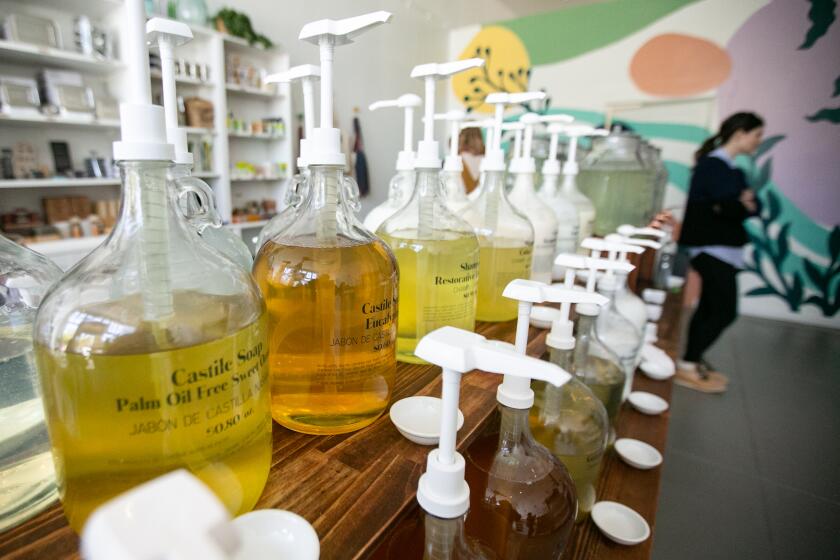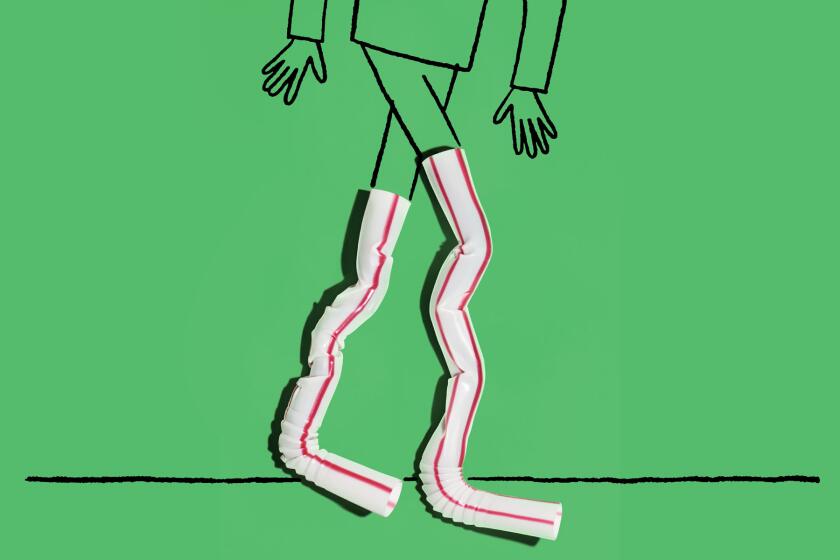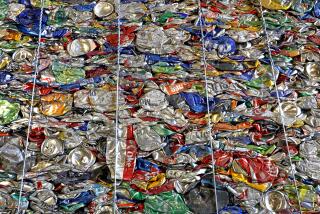Reduce, reuse, replenish: Zero-waste refill stations and the end of recycling
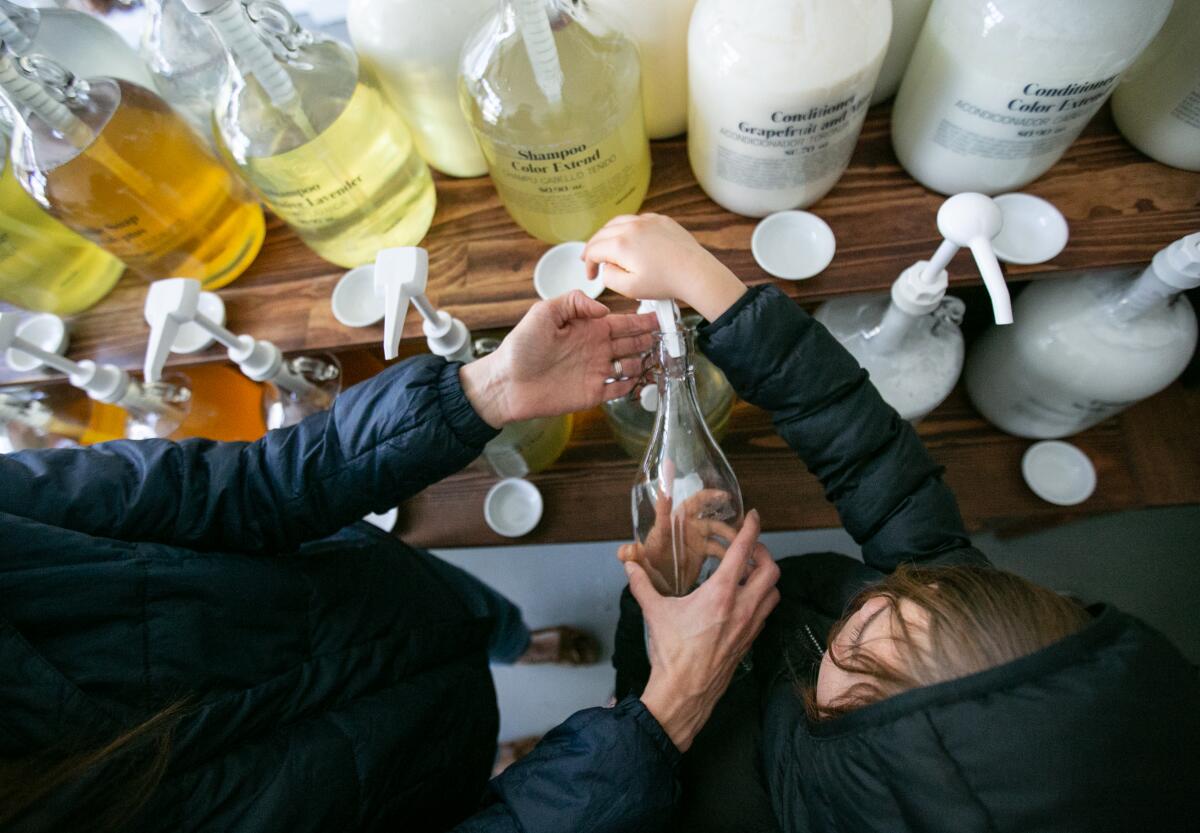
Running low on laundry detergent and dishwashing soap usually means stocking up the next time we get groceries. But a new crop of stores are offering a zero-waste alternative.
They’re called refill stations. You bring your empty containers and fill them back up.
These stores are more hip than hippie. Many are owned by young women who started reducing plastic in their own lives and wanted to give other people a way to do the same. The individual products differ from store to store, but most offer unscented versions of personal care items like shampoo and lotion that are also free of additives and preservatives like sulfates, phthalates and parabens. Often, they are comparably priced to what you’d pay for a new bottle of a similar product, and in some cases, it’s actually a much better deal.
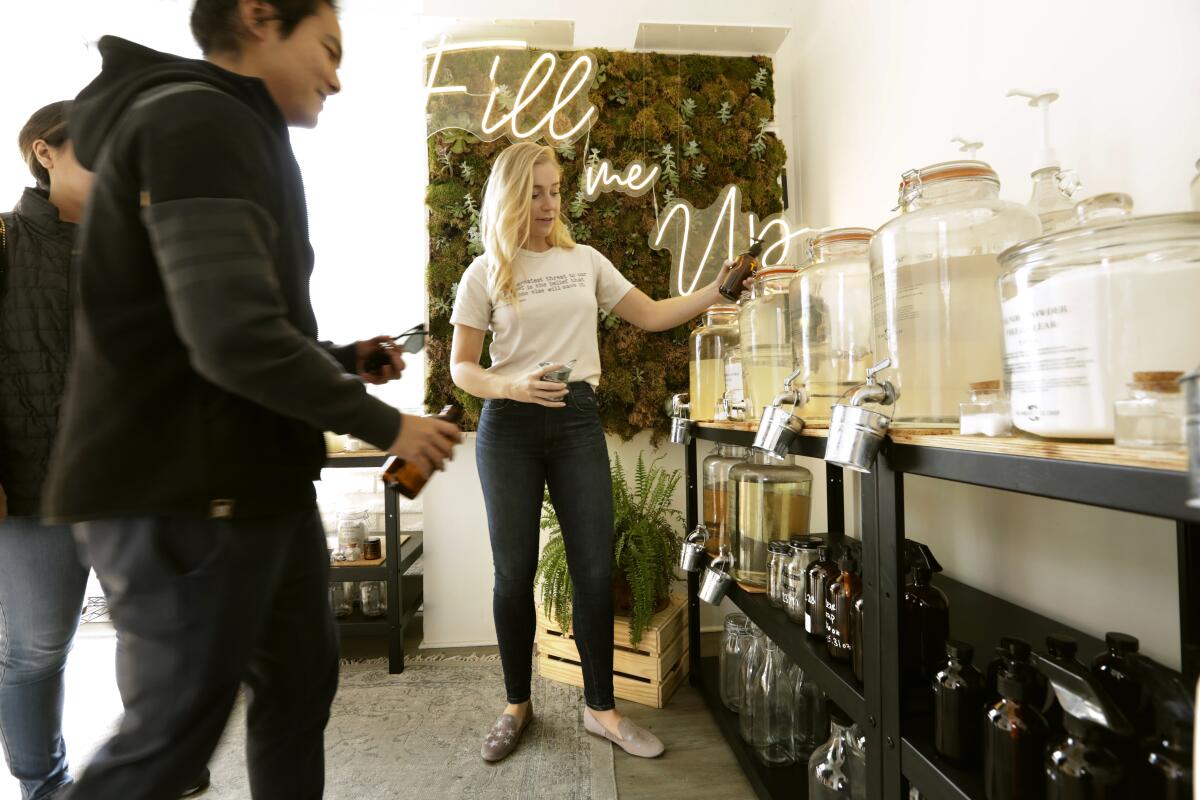
Does it make a difference?
Your blue recycling bin has an ugly secret: Not everything you put into it gets recycled.
A big part of the problem is the vanishing market for recycled materials abroad. A little over two years ago, China announced it was no longer accepting most recyclable plastic and paper from other countries. Since then, countries around the world have struggled to find somewhere willing to take those materials. Without anyone to recycle the recyclables, the process is far less financially viable: RePlanet, California’s largest operator of recycling redemption centers, shut down in August. Burbank Recycle Center resorted to sending recyclable materials directly to landfills.
“We have this massive plastics problem and we can’t recycle our way out of it,” said Nick Lapis, director of advocacy for the environmental organization Californians Against Waste. Consumers have to make changes if they want to put a dent in the estimated 234 pounds of plastic produced per person per year in the United States.
Zero-waste refill stations let you reduce plastic waste and potentially save money because you pay only for what you take. Here’s where to find them.
Using the refill stations not only saves plastic, Lapis said, but also sends a strong signal to manufacturers that consumers want alternatives.
“One of the good things about plastic is that it is very durable and lasts a very long time. That’s also the bad thing about it,” he said. “But in terms of reusing it for putting more detergent in the bottle or whatever, that’s perfectly reasonable.”
So your bottles can have a second life — and the whole process can have a much bigger impact than you might think.
Here’s how it works.
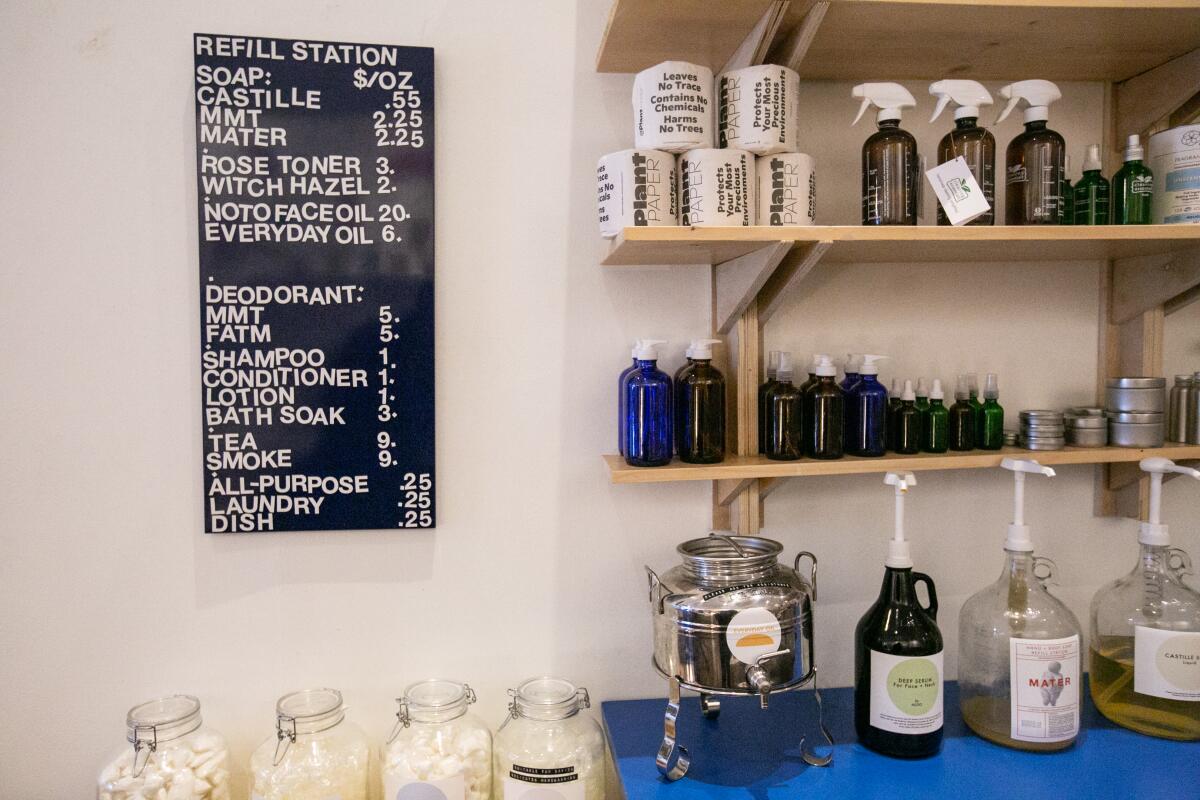
How to use a refill station
Step 1: Bring or buy a container.
As Angelenos, we’ve trained ourselves to bring reusable bags when we run errands. Some of us also carry reusable straws and cutlery. Is it really such a stretch to start bringing clean bottles and jars too?
Rachel Berks, founder and CEO of Otherwild, a general store and refill station in Los Feliz, doesn’t think so.
“We all half-time live out of our cars anyway,” said Berks, who splits her time between L.A. and New York City. “I always have empty bottles in our car in L.A.”
No matter how hard I tried, plastic kept sneaking its way back into my life.
At some locations, there’s even a bin of donated containers where you’ll find empty Mason jars or similar containers. But not always: Stephanie Cochrane, owner of the Waste Less Shop in Manhattan Beach, pointed to where someone had dropped off an empty tequila bottle.
Step 2: Weigh your container.
Find the weigh station in the store and determine the weight of your item. The store will have a way for you to mark your bottle, either with grease pencils, dry-erase markers or stickers, or just type the weight into your phone.
If you bring a container from home, it doesn’t have to be completely empty: You only pay for what you fill up.
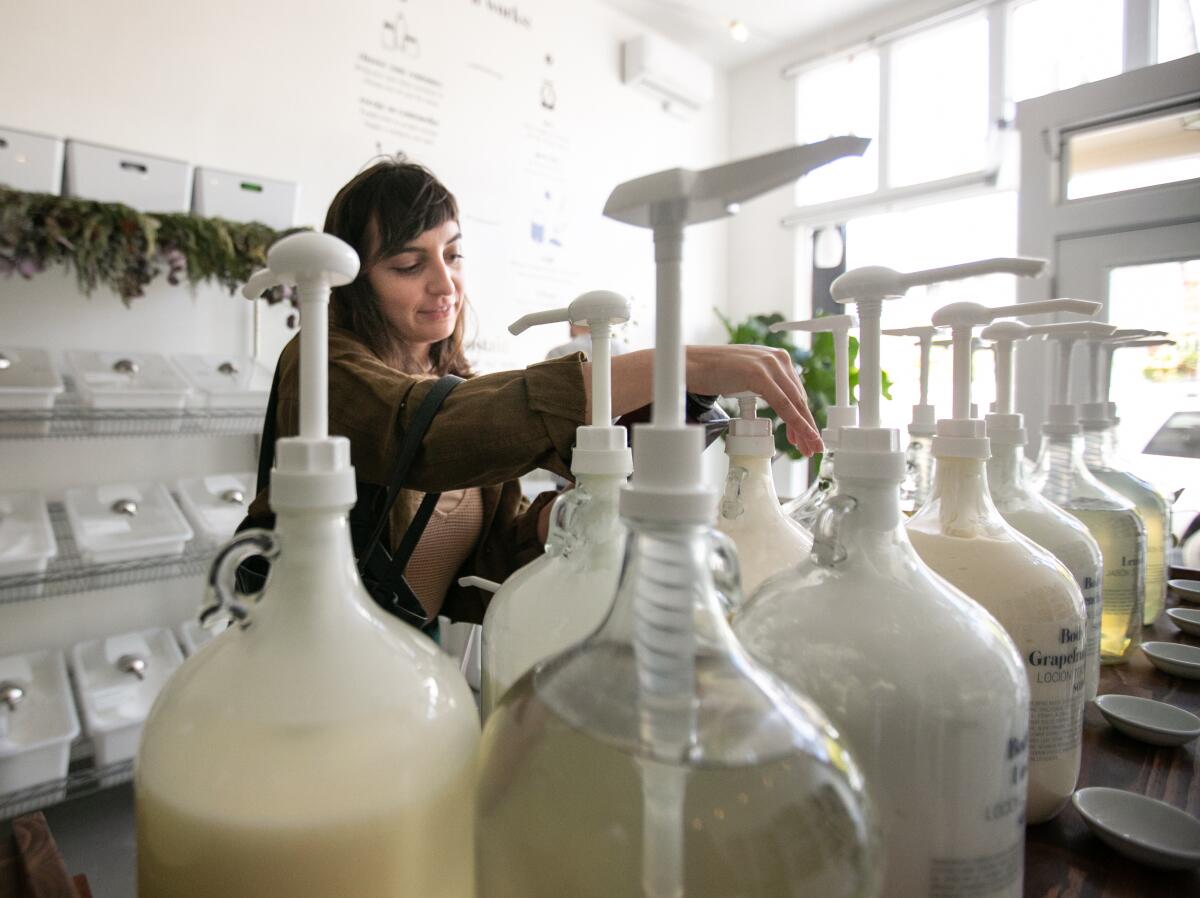
Step 3: Fill up.
Choose which product you want and start pumping. If you’re picky, don’t worry about filling your container all the way. The most popular products are dish soap and laundry detergent.
“You can try a little bit, but you don’t have to purchase the entire 8-ounce or 16-ounce bottle in the store to see if you like the product,” said Leslie Campbell, founder and CEO of Sustain L.A. in Highland Park.
Step 4: Bring your bottle to the register and pay.
The cashier will weigh your bottle again and subtract the starting weight to give you the total. Prices vary but at most, the by-weight cost of household cleaners in particular worked out to about the same or less as buying a new bottle from the store.
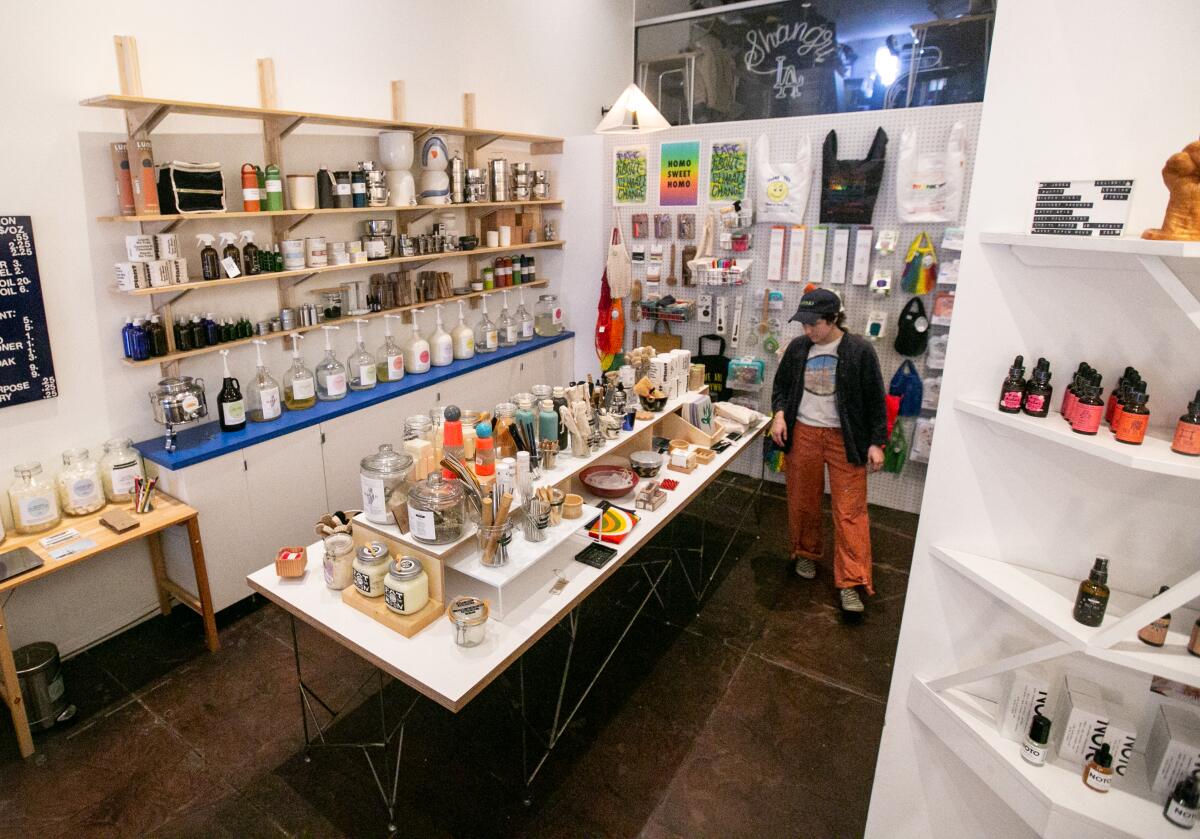
Cleaning fluids sold as a concentrate are probably the best deal: At Sustain L.A., all-purpose spray household cleaner costs 30 cents an ounce and is meant to be diluted in a gallon of water. That means a gallon of cleaner will set you back barely a quarter of a penny per ounce. Compare that to Amazon, where a three-pack of Mrs. Meyers Multi-Surface Everyday Cleaner works out to 24 cents per ounce.
Other things are more expensive, particularly personal care and beauty items like deodorant ($6 per ounce of Fat to the Moon deodorant at Sustain L.A.) and face serum ($20 per ounce of NOTO Botanics Deep Serum at Otherwild). Those products tend to be free of preservatives like sulfates and parabens and made with organic and sustainably sourced ingredients.
More to Read
Sign up for The Wild
We’ll help you find the best places to hike, bike and run, as well as the perfect silent spots for meditation and yoga.
You may occasionally receive promotional content from the Los Angeles Times.
